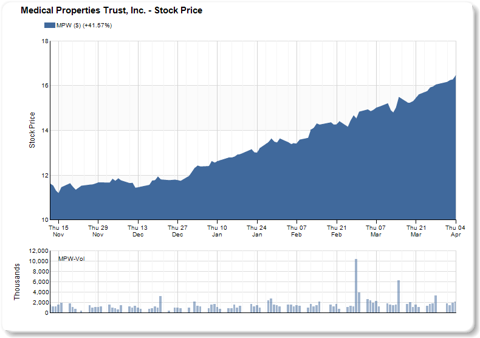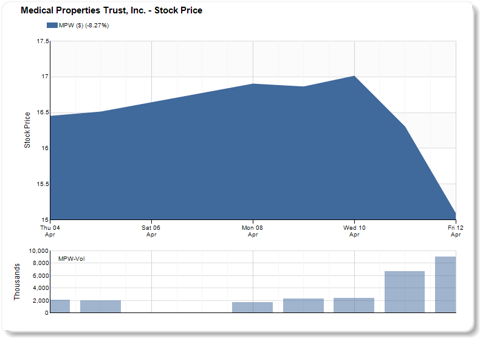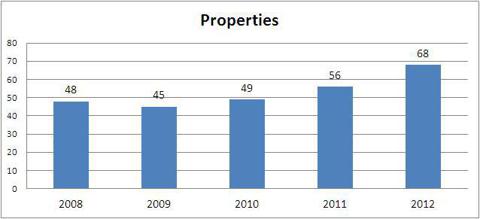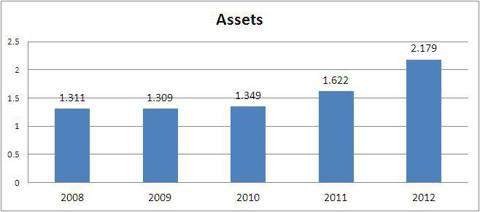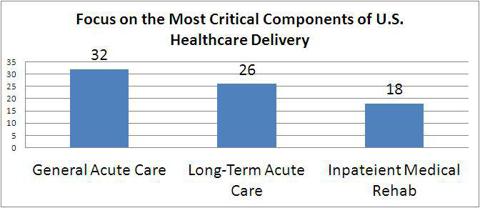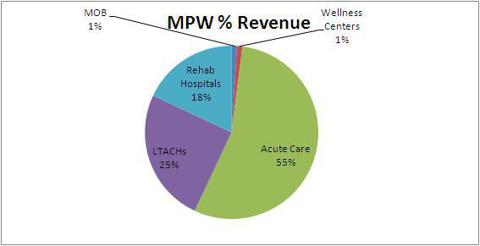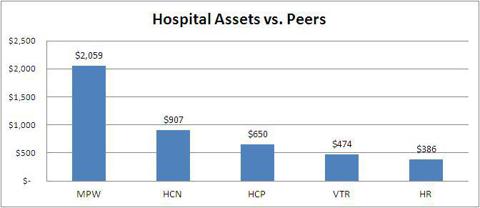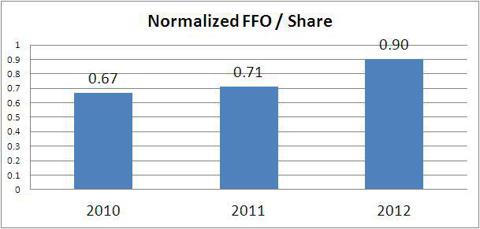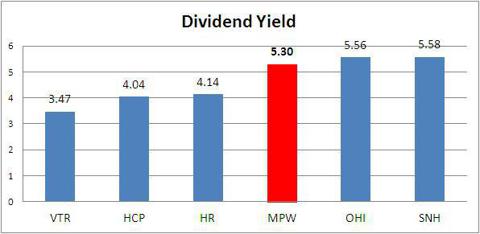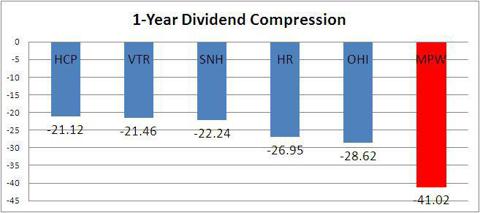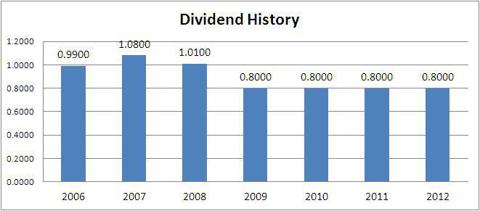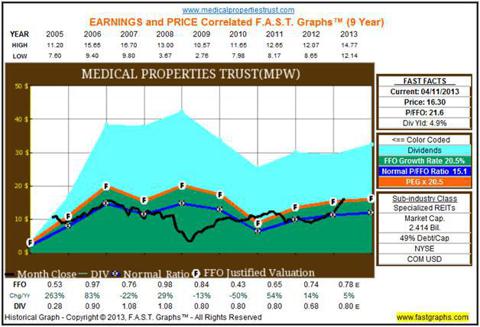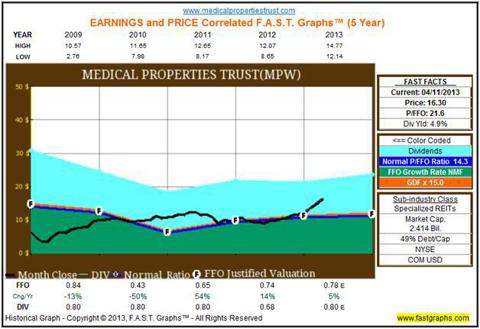America's shale gas revolution is already paying off big time. Not only has it been a boon to consumers and companies who use natural gas for heating their homes and offices, it also appears to be benefiting the environment. Let's take a closer look.
EIA reports lower CO2 emissions
Last week, the U.S. Energy Information Administration (EIA) reported that U.S. energy-related carbon dioxide emissions for 2012 fell to 5.3 billion tons ��the lowest level in nearly two decades. What's more is that since 2007, emissions have declined consecutively each year, with the exception of 2010. The reason?
The EIA attributed the decline in CO2 emissions primarily to the shift away from coal, the most carbon-intensive fossil fuel, and toward natural gas, the least carbon-intensive fuel, for electric power generation. Less demand for transportation fuels and relatively weak demand for winter heating also played a role in driving emissions lower.
5 Best Energy Stocks For 2014: CNOOC Limited(CEO)
CNOOC Limited, through its subsidiaries, engages in the exploration, development, production, and sale of crude oil, natural gas, and other petroleum products. The company?s oil and natural gas properties are located in offshore China, which include Bohai Bay, western south China Sea, eastern south China Sea, and east China Sea, as well as in Indonesia, Iraq, and other regions in Asia; and Oceania, Africa, North America, and South America. As of December 31, 2010, the company had net proved reserves of approximately 2.99 billion barrels-of-oil equivalent, including approximately 1.92 billion barrels of crude oil and 6,458.3 billion cubic feet of natural gas. It also provides bond issuance services; and has a joint venture with Bridas Energy Holdings. CNOOC Limited was founded in 1982. The company is headquartered in Central, Hong Kong, and is considered a Red Chip company due to its listing on the Hong Kong Stock Exchange. CNOOC Limited is a subsidiary of China National Of fshore Oil Corporation.
Advisors' Opinion:- [By Dave Friedman]
Institutional investors bought 1,474,410 shares and sold 1,532,340 shares, for a net of -57,930 shares. This net represents 0.00% of common shares outstanding. The number of shares outstanding is 44,669,199,980. The shares recently traded at $187.66 and the company’s market capitalization is $82,478,290,357.81. About the company: CNOOC Limited, through its subsidiaries, explores, develops, produces, and sells crude oil and natural gas.
5 Best Energy Stocks For 2014: PROS Holdings Inc.(PRO)
PROS Holdings, Inc. provides pricing and margin optimization software worldwide. It offers PROS Pricing Solution Suite, a set of integrated software products that enables enterprises to apply pricing and margin optimization science to determine, analyze, and execute optimal pricing strategies through the aggregation and analysis of enterprise application data, transactional data, and market information. The PROS Pricing Solution Suite consists of Scientific Analytics to gain insight into pricing performance; Price Optimizer to institute control of pricing policies; and Deal Optimizer to provide guidelines, additional context, and information to sales force. Its products also include PROS Revenue Management Solution Suite, a suite of industry specific revenue management software products for the enterprises in travel target markets. The PROS Revenue Management Solution Suite comprises PROS Analytics to identify hidden revenue leaks and opportunities, PROS Revenue Management product to manage passenger demand with leg- or segment-based revenue optimization, PROS O&D products to manage passenger demand with passenger name record or PNR based revenue optimization, PROS Real-Time Dynamic Pricing product to determine the optimal prices, PROS Group Revenue Management product to manage group request and booking revenues, PROS Network Revenue Planning product to deliver network-oriented fare class segmentation, PROS Cruise Pricing and Revenue Optimization for customers to understand consumers price sensitivities and track competitor behavior, PROS Hotel Revenue Optimization product that helps customers to enhance pricing decision. In addition, the company provides pricing and implementation professional, and ongoing support and maintenance services. It serves customers in the manufacturing, distribution, services, hotel and cruise, and airline industries primarily through its direct sales force. The company was founded in 1985 and is headquartered in Houston, Texas.
Advisors' Opinion:- [By Fernandez]
PROS Holdings, Inc. (NYSE: PRO), is a leading provider of pricing and revenue optimization software worldwide, in five major markets: airline, hotel, cruise, manufacturing and services.
PROS has proprietary pricing algorithms and systems that have been developed and refined over many years of implementation and experience, that provide the company with a distinct competitive advantage over the many rivals that troll the pricing optimization space.
When I recommended the purchase of PROS shares, I did not fully appreciate the potential severity of the downturn in IT spending, and the markets in which PROS operates.
Even with the stock trading around $7.00 per share, I thought that there was more downside risk than upside potential.
With shares now trading at $5.50 as of this writing, recommending selling shares at $7.00 when I did was indeed a prudent thing to do, as the shares are now down over 20% from where I recommended they be sold not too long ago.
I detailed my exact reasons for selling shares of PROS here.
The question now becomes, with the shares significantly lower than before, is PROS actually a bargain at these prices? (See page 2)
I definitely think we are getting there, but wouldn’t venture to guess until after their next earnings announcement on 11-6-08.
Best Safest Stocks For 2014: National Fuel Gas Company(NFG)
National Fuel Gas Company, through its subsidiaries, operates as a diversified energy company primarily in the United States. The company operates through four segments: Utility, Pipeline and Storage, Exploration and Production, and Energy Marketing. The Utility segment sells natural gas or provides natural gas transportation services to approximately 727,000 customers in Buffalo, Niagara Falls, and Jamestown, New York; and Erie and Sharon, Pennsylvania. The Pipeline and Storage segment provides interstate natural gas transportation and storage services for affiliated and nonaffiliated companies through an integrated gas pipeline system; and 27 underground natural gas storage fields, as well as 4 other underground natural gas storage fields owned and operated jointly with other interstate gas pipeline companies. This segment also transports natural gas for industrial customers and power producers in New York State. It owns the Empire Pipeline, a 157-mile pipeline; and the Empire Connector, which is a 76-mile pipeline extension. The Exploration and Production segment engages in the exploration for, and the development and purchase of natural gas and oil reserves in California, in the Appalachian region of the United States, and in the Gulf Coast region of Texas and Louisiana. As of September 30, 2009, this segment had proved developed and undeveloped reserves of 46,587 thousand barrels of oil and 248,954 million cubic feet equivalent of natural gas. The Energy Marketing segment markets natural gas to industrial, wholesale, commercial, public authority, and residential customers primarily in western and central New York and northwestern Pennsylvania. The company also develops and operates mid-range independent power production and landfill gas electric generation facilities. National Fuel Gas Company was founded in 1902 and is based in Williamsville, New York.
Advisors' Opinion:- [By Glenn]
Director of National Fuel Gas Co., R D Cash, bought 2,000 shares on 9/15/2011 at an average price of $59.09. National Fuel Gas Co. is engaged in the business of owning and holding securities issued by its subsidiary companies. National Fuel Gas Co. has a market cap of $4.89 billion; its shares were traded at around $59.09 with a P/E ratio of 22.3 and P/S ratio of 2.8. The dividend yield of National Fuel Gas Co. stocks is 2.4%. National Fuel Gas Co. had an annual average earnings growth of 2.1% over the past 10 years.
On August 4, National Fuel Gas Company announced consolidated earnings for the third quarter of fiscal 2011. Earnings for the third quarter were $46.9 million, or $0.56 per share, an increase of $4.3 million, or $0.05 per share, compared to the prior year’s third quarter earnings of $42.6 million or $0.51 per share.
Production, Utility, and Energy Marketing segments, and the All Other category.
In September, Director R D Cash bought 2,000 shares of NFG stock. Director Stephen E Ewing bought 1,700 shares in August. Director Rolland E Kidder sold 1,000 shares the same month.
5 Best Energy Stocks For 2014: Seadrill Limited(SDRL)
Seadrill Limited, an offshore drilling contractor, provides offshore drilling services to the oil and gas industries worldwide. It also offers platform drilling, well intervention, and engineering services. As of March 31, 2011 the company owned and operated 54 offshore drilling units, which consist of drillships, jack-up rigs, semisubmersible rigs, and tender rigs for operations in shallow and deepwater areas, as well as in benign and harsh environments. Seadrill Limited was founded in 1972 and is based in Hamilton, Bermuda.
Advisors' Opinion:- [By Bryan Perry]
SeaDrill Ltd. (NYSE: SDRL) is a unique opportunity for income investors seeking a pure play on deep-water drilling outside the post-BP spill in the Gulf of Mexico. The company was formed in 2005, and owns the most state-of-the-art drilling equipment in the entire industry that commands premium day rates. It is in big demand with utilization rates running near100% as big oil deposits become harder to find without going deep.
These guys operate all over the world in 15 countries on four continents, owning 54 rigs with exposure to only one rig in the Gulf of Mexico. Most of their drilling activity is off the coast of Norway and South Asia, so it has no exposure to the now unstable Middle East. However, news of ARAMCO in Saudi Arabia upping drilling production is hugely positive news for the oil and gas drilling sector. It confirms the belief that the worldwide drilling rig count will rise as well as day rates for the balance of 2011.
Shares of SeaDrill stand to trade significantly higher than its current price of $36.50, while paying a dividend yield of 7.5%. Buy SDRL under $40.
5 Best Energy Stocks For 2014: Exxon Mobil Corporation(XOM)
Exxon Mobil Corporation engages in the exploration and production of crude oil and natural gas, and manufacture of petroleum products, as well as transportation and sale of crude oil, natural gas, and petroleum products. The company manufactures and markets commodity petrochemicals, including olefins, aromatics, polyethylene and polypropylene plastics, and other specialty products. As of December 31, 2010, it operated 35,691 gross and 30,494 net operated wells. The company has operations in the United States, Canada/South America, Europe, Africa, Asia, and Australia/Oceania. Exxon Mobil Corporation was founded in 1870 and is based in Irving, Texas.
Advisors' Opinion:- [By Hawkinvest]
Exxon (XOM) is a must-own stock for many oil investors. This company has a strong balance sheet and a very significant reserve base, which grows in value with the price of oil. Exxon recently reported solid results with earnings for the fourth quarter of 2011 coming in at $1.97 per share. The company also reported that it bought back about $5 billion worth of shares. Weaker margins in the refinery business did impact results, but overall, the report shows that the company is poised for a solid year ahead. Exxon has a very strong balance sheet and it can afford to continue buying back shares which will help to boost future earnings. This stock was trading for about $80 per share in December, but has been trending higher. Exxon shares have recently been finding support around $83 per share, so buying on dips at that level are particularly attractive.< /span>
Here are some key points for XOM:
Current share price: $86.57
The 52 week range is $67.03 to $88.23
Earnings estimates for 2011: $8.25 per share
Earnings estimates for 2012: $8.99 per share
Annual dividend: about $1.88 per share which yields about 2.2%
- [By Dan Moskowitz]
This article�has been�heavy on optimism, but please keep in mind that this pertains to the long haul. A deflationary environment is a possibility in the coming years. If this type of environment presents itself, then Exxon Mobil will have to deal with some challenging times. However, as�hinted at�several times earlier, Exxon Mobil is a long-term OUTPERFORM.
- [By Steven Goldberg]
ExxonMobil (XOM, $88.00, 2.9%) is the world's biggest non-government-owned oil and gas company. Exxon's executives have long managed the company with an eye toward producing high profits for shareholders. In the past five years, Exxon has bought back $100 billion in stock and paid more than $40 billion in dividends. The stock, another Dow member, trades at 10 times estimated earnings (its yield is based on a recently announced increase in the dividend rate).
 [ Enlarge Image ]
[ Enlarge Image ] [ Enlarge Image ]
[ Enlarge Image ] [ Enlarge Image ]
[ Enlarge Image ] [ Enlarge Image ]
[ Enlarge Image ] [ Enlarge Image ]
[ Enlarge Image ] [ Enlarge Image ]
[ Enlarge Image ]



